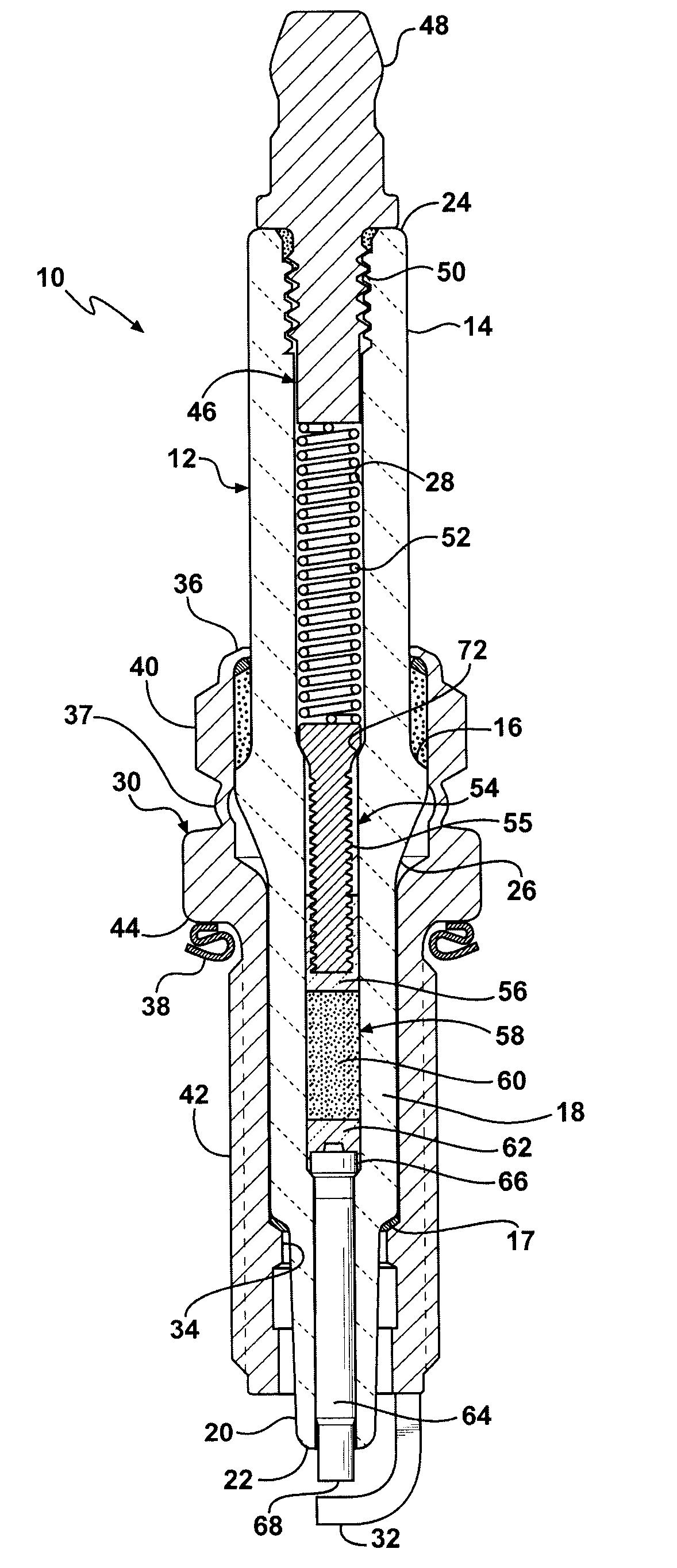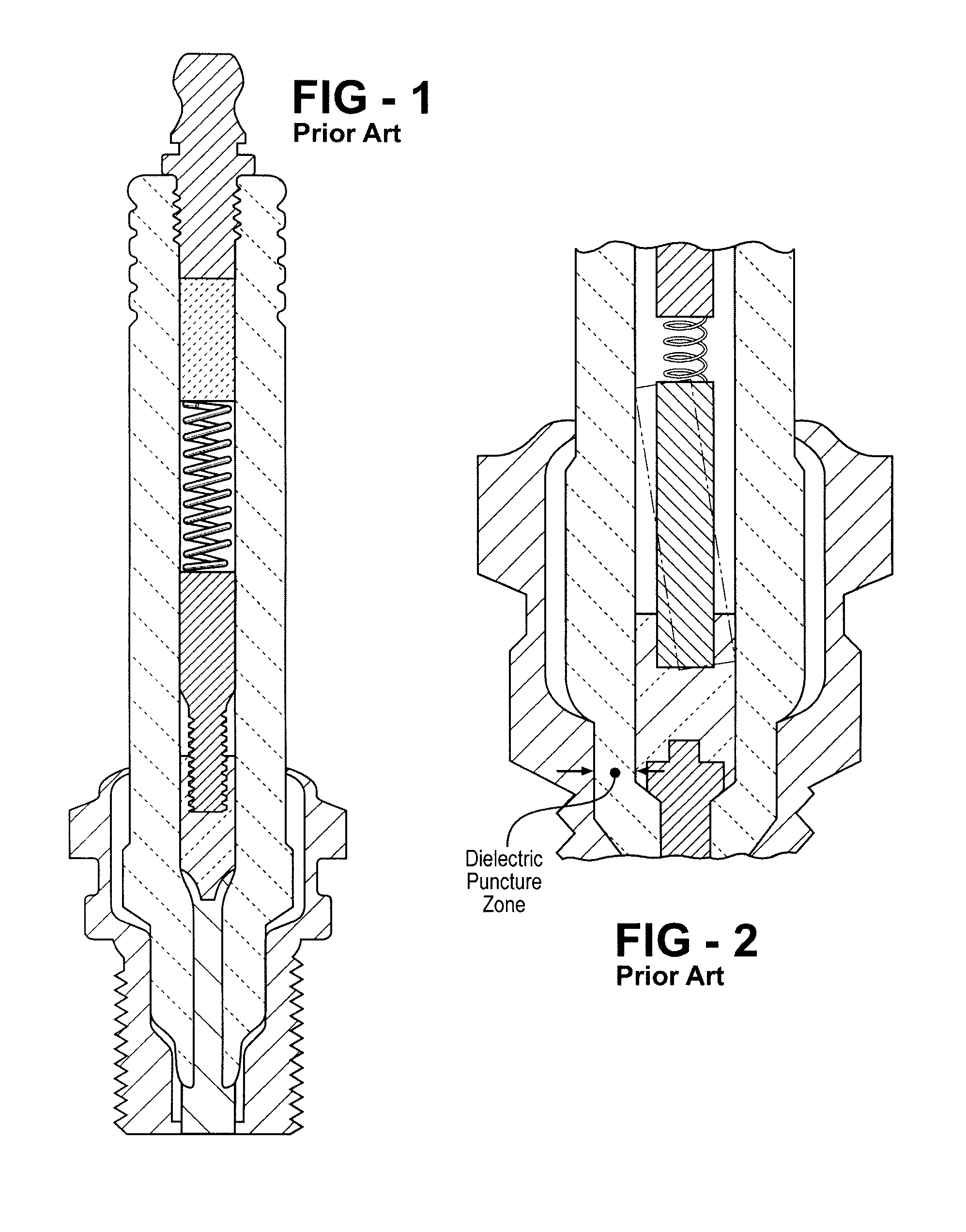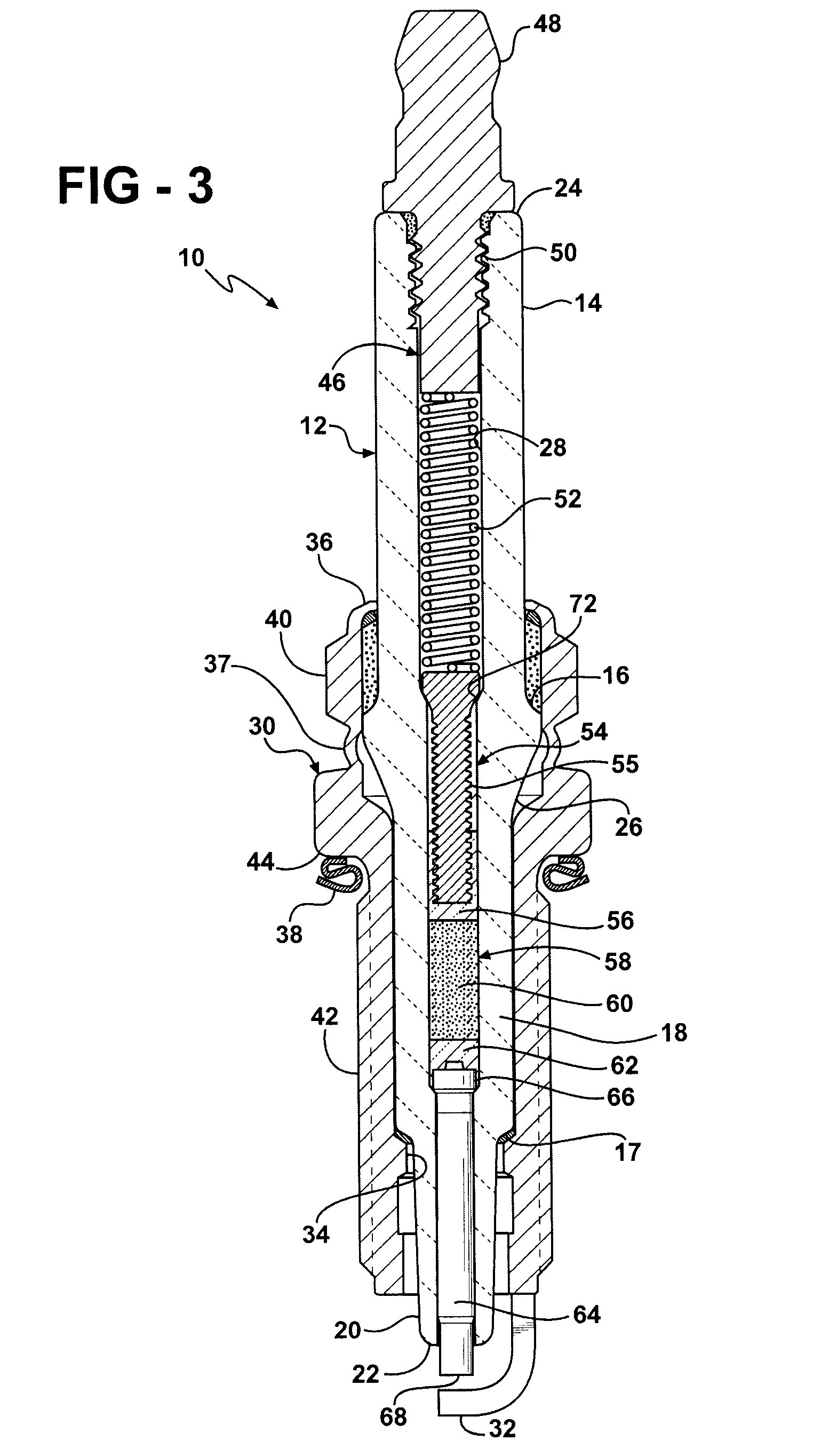Small-diameter spark plug with resistive seal
a resistive seal and small diameter technology, applied in the field of spark plugs, can solve the problems of reducing the dielectric capacity of the spark plug, affecting the performance and safety of the plug, and producing performance and safety related malfunctions, so as to avoid pressure build-up during assembly, increase the dielectric capacity, and reduce the effect of rfi
- Summary
- Abstract
- Description
- Claims
- Application Information
AI Technical Summary
Benefits of technology
Problems solved by technology
Method used
Image
Examples
Embodiment Construction
[0025]Referring to the Figures, wherein like numerals indicate like or corresponding parts throughout the several views, a spark plug according to the subject invention is generally shown at 10 in FIG. 3. The spark plug 10 includes a tubular ceramic insulator, generally indicated at 12, which may be made from an aluminum oxide ceramic or other suitable material having the desired dielectric strength, mechanical strength and resistance to heat shock. The insulator 12 may be molded dry under extreme pressure and then kiln-fired to vitrification at high temperature. However, those skilled in this art will appreciate that methods other than dry pressing and sintering may be used to form the insulator 12. The insulator 12 has an outer surface which may or may not be glazed about its exposed portions. The insulator 12 may include a partially exposed upper mast portion 14 to which a rubber spark boot (not shown) surrounds and grips to establish a connection with the ignition system. The ex...
PUM
 Login to View More
Login to View More Abstract
Description
Claims
Application Information
 Login to View More
Login to View More - R&D
- Intellectual Property
- Life Sciences
- Materials
- Tech Scout
- Unparalleled Data Quality
- Higher Quality Content
- 60% Fewer Hallucinations
Browse by: Latest US Patents, China's latest patents, Technical Efficacy Thesaurus, Application Domain, Technology Topic, Popular Technical Reports.
© 2025 PatSnap. All rights reserved.Legal|Privacy policy|Modern Slavery Act Transparency Statement|Sitemap|About US| Contact US: help@patsnap.com



